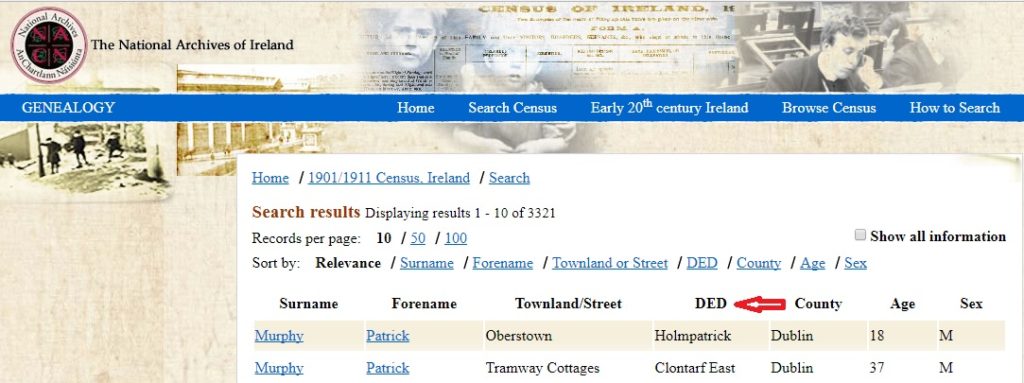The digitised Revision Books are arranged by county and then by District Electoral Division (DED), which can pose a problem for anyone who has identified the location of their townland by civil parish. Of course the staff in the Valuation Office will look up your townland and supply you with the DED, but they are often busy. You will also find the Index of Townlands in the public research room and you can look up the townland and corresponding DED.
However, the Index of Townlands may not always be to hand. Another quick way of determining the DED before you even depart for the Valuation Office is to look up the townland in the 1901 and 1911 census. The census is the only other source in which the townlands are arranged by DED. The DED is the place name given after the townland on the census webpage.

Once you have the DED, you can very quickly navigate your way to the relevant Valuation Office Revision Books. The images of the index for each book are stored in a folder titled, obviously, Index. The page numbers in the index should match the image numbers in the folder.
A3 and A4 colour copies of the digitsed revision books can be printed on site at a cost of €1 per page, but even a photograph of the computer screen can be a sufficient copy of a relevant record. If you are planning a visit to the Valuation Office, armed with your list of townlands and DEDs, please check our guide to the Valuation Office.
